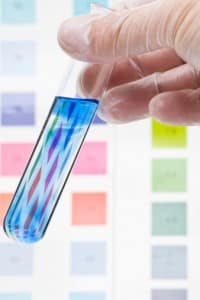 History:
History:
“The power of hydrogen” scale, more commonly known as pH scale, was first devised in 1909 by Søren Sørensen, Director of Chemistry at Carlsberg Laboratory in Copenhagen, Denmark. [1] The laboratory was initially established in 1875 by JC Jacobsen with the intent to better understand the malting, brewing, and fermenting process of various grains and yeasts used to brew beer. Fortunately, JC Jacobsen insisted upon sharing their scientific findings with the entire brewing industry, and they pushed well beyond their initial focus – leading to their eventual expansion into, and subsequent impact upon the biotechnological and biomedical fields of science. [2]
Thus, Søren Sørensen began testing solutions and assigning them pH values. While Latvian chemist, Wilhelm Ostwald, inventor of electrical conductivity equipment that could measure hydrogen ions, was busy collecting a Nobel Prize (1909) “in recognition of his work on catalysis and for his investigations into the fundamental principles governing chemical equlibria and rates of reaction,” [3] it was Sørensen who succeeded in expressing those reactions in an elegant formula using a scale.
Cleaning Science:
In simple terms, the pH scale expresses hydrogen ion concentrations. A solution receives a pH value ranging from 0 (acid) to 14 (alkaline). Acids are known to release hydrogen ions when combined with water. In contrast, alkaline compounds combine with hydrogen ions in water. [4] A neutral pH, therefore, is given a value of 7, signifying the middle of the scale – neither acid nor alkaline.
These are important definitions as they establish a foundation for cleaning science: The pH value of soil, spots, or debris will determine a required pH level of the selected chemical. For example, soil with a pH value measuring in the acid range of the scale will need an alkaline cleaner, and vice-versa. This is the science behind the clean.
pH Examples:
It is easier to understand the pH scale in terms of actual solutions, for while Søren Sørensen would have known the pH of beer is 4.5, not everyone is as familiar with pH values. Acid examples include vinegar, soda, lemon juice, and coffee. Alkaline examples include baking soda, household ammonia, and household bleach. Water is considered neutral. Add a little salt to that water, call it an ocean, and it moves to a pH value of 8.1 Milk is on the acid side of neutral, and human blood falls on the alkaline side with a pH value of 7.35-7.45. [5]
Medical Science:
Speaking of human blood, Sørensen found that enzymes that hasten biochemical reactions work better in some environments than in others. This discovery led to modern medical testing of pH levels in bodily fluids such as blood and urine. High acidity is associated with diabetes while urinary tract infections show high alkalinity. And to think it all started with beer…
Cleaning Science Revisited:
Have you ever tried to get beer out of carpet? The pH value is 4.5 (acid), so you will need an “opposite” alkaline extraction cleaner with a pH value around 9 or 10. When you apply an opposite cleaner you bring the pH value of the surface back to neutral.
Have you ever wondered which cleaner is best for the task? The default cleaner is a General Purpose Cleaner. Why is it considered a “general purpose” cleaner? These cleaners typically have a pH value ranging from 6 to 8 which allows them to combat general soil types with the same pH value range of 6 to 8. Thus, a generally neutral cleaner will maintain the already neutral surface. Apply a cleaner with high amounts of acid to a neutral soil type, however, and you will effectively change the pH value of that surface to one that is no longer neutral.
Similarly, a neutral pH cleaner can prove ineffective depending upon the soil type. If you are cleaning battery acid, for example, which has a high acidic value, the selected cleaner should have an equally high alkaline value. Thus, one cancels the other and returns the surface to neutral.
Conclusion:
As with medical science, cleaning science relies heavily upon indicators of the problem. The pH scale provides the industry with a set of guidelines for both diagnosing the problem and removing the soil. Understanding the pH scale, therefore, leads to greater understanding of the cleaning process as a whole, and the soil types in particular. That awareness will result in better chemical choices and a safer working environment.
[1] Chemical Heritage Foundation. Søren Sørensen 2010 <http://www.chemheritage.org/discover/online-resources/chemistry-in-history/themes/electrochemistry/sorensen.aspx>
[2] Carlsberg Group. The Carlsberg Laboratory <http://www.carlsberggroup.com/Company/Foundations/CarlsbergFoundation/Pages/Laboratory.aspx>
[3] “The Nobel Prize in Chemistry 1909”. Nobelprize.org. Nobel Media AB 2013. Web. 23 Mar 2014. <http://www.nobelprize.org/nobel_prizes/chemistry/laureates/1909/>
[4] Proto. Massachusetts General Hospital. Fall 2009. <http://protomag.com/assets/soren-sorensen-pioneer-ph>
[5] National Oceanic and Atmospheric Administration, U.S. Department of Commerce, PMEL Carbon Program. “The pH scale with some common examples.” <http://www.pmel.noaa.gov/co2/file/The+pH+scale+with+some+common+examples>





